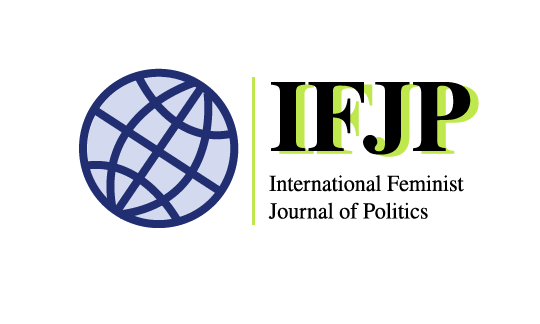Rethinking Insurgent Masculinity in the People’s War in Nepal
By: Heidi Riley
Military organizations are becoming increasingly engaged in the Women, Peace and Security (WPS) agenda. However approaches to monitoring and evaluation tend to take a quantitative approach using numerical indicators that show, for example, the number of women recruited, how many gender advisors have been employed, or how often a gender dimension is included in military training courses. Yet, if the WPS agenda is intended to be transformative, surely we need to be looking beyond statistics towards a better understanding the impact of these measures on the perceptions and behaviors of personnel.
Photo source: Global Security
A more comprehensive assessment of impact would benefit from an in-depth analysis of how the implementation of WPS measures have contributed to changes in dominant notions of masculinity within military organizations, or how they have impacted on male perceptions of women, both in the organization and outside of it. While this method does not appear to have yet been adopted in the context of state militaries, my article Male Collective Identity in the People’s War in Nepal takes this approach in the context of a non-state armed group, the People’s Liberation Army (PLA) in Nepal. Of course non-state militaries are not inclined to follow international policies on gender relations, however, the analogy lies with the fact that the PLA adopted an ideology that espoused a greater level of gender equality than what existed in traditional Nepalese society, and, coupled with a successful women’s recruitment strategy, adopted strict guidelines of appropriate code of conduct on gender relations in the organization.
Experiencing a change in gendered social structure
Conflict shakes up and destabilizes gender hierarchies and norms. A former Maoist section commander from Latipur district Nepal I spoke with explained,‘We used to think that women can also be leaders, but I had never ever thought that a woman is capable of firing guns and fighting a war like a man’. Conflict related harm against women notwithstanding; war can provide spaces for women to take on roles that would normally be reserved for men. While some women may experience a sense of empowerment as a result of taking on such roles, the visibility of women in traditionally masculine roles as a result of conflict may also cause men to reconsider gendered assumptions and hierarchies. This is consistent with the findings in my article, which exposes how the visibility of women within the PLA, demonstrating ‘bravery on the battlefield’ and ‘capable of using a weapon’, typically seen as masculine capabilities, led men of the PLA to shift their perceptions of women in a way that espoused a greater respect for their female counterparts.
In the beginning, I used to feel bit awkward [working with women] due to the cultural upbringing we had. Later, my perception started changing and everything became normal. (Former member of the People’s Liberation Army from Humla in he far West of Nepal)
The People’s War in Nepal lasted between 1996 and 2006 and was largely a rural conflict. The Maoist leadership espoused a Marxist inspired ideology and rhetoric that challenged the social, economic and political marginalization of women, and harmful discriminatory rituals, that were typical in pre-conflict Nepal. Moreover, by the end of the conflict, the PLA included roughly 40% women’s participation. Although the gendered ideology and practice can be criticized from a variety of feminist perspectives, it can nevertheless be understood as espousing a greater level of equality than was typically experienced in rural, pre-conflict Nepal. Through the voices of men and women of the PLA, the article delves into understanding how being subject to a new gender regime, and working alongside women, shaped male attitudes towards: gender specific roles and conduct, notions of acceptable behavior within male/female interaction, and perceptions of gender hierarchies, during conflict.
Incorporating masculinity within the Women Peace and Security Agenda
There is an increasing focus on the inclusion of masculinities within the Women Peace and Security agenda, both at the international and regional level, and within newer manifestations of National Action Plans. The question thus remains as to how to evaluate such measures beyond counting how many male gender champions have been identified. A move towards a focus on impact would do well to take a more in-depth approach to evaluation that looks at masculinity and change within military institutions, but that also takes account of nuances in notions of masculinity within approaches to the demobilization disarmament and reintegration of armed groups.
My work highlights how strict internal policies on sexual misconduct led to limiting gender based violence in the Maoists, but also warns of how masculine perceptions of ‘policing’ gender equality in the villages may lead to other forms of discriminations that intersect with long entrenched ideas around marriage and family roles. My findings show that masculinity change during conflict is nuanced and context specific, but also raises the issue of how it is important to take into account wartime experiences, beyond the association with violence, when building a profile of male ex-combatants in post-conflict. Failing to take account of wartime experiences that may have normalized working alongside women, risks overlooking possibilities for implementing reintegration programs that can build on wartime gender relations in a time of transition.
Read the full article here: “Male collective identity in the People’s Liberation Army of Nepal.”
Dr Heidi Riley is assistant professor in the School of Politics and international relations, University College Dublin, with a focus on peace and conflict studies. Her current research centres around conflict and masculinities, gender and negotiated settlements, and approaches to UNSCR1325.
Each blog post gives the views of the individual author(s) based on their published IFJP article. All posts published on ifjpglobal.org remain the intellectual property and copyright of the author or authors.



